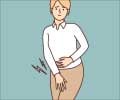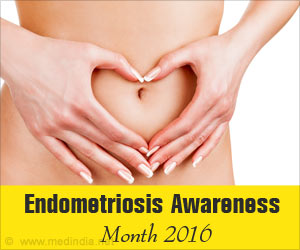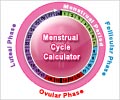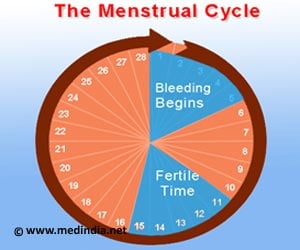- D C Dutta’s textbook of Gynecology
- Menstrual Cycles: What Really Happens in those 28 Days?! - (http://www.fwhc.org/health/moon.htm)
- Menstrual Cycle - (http://www.womenshealth.gov/publications/our-publications/fact-sheet/menstruation.html)
What is Menstrual Cycle?
The menstrual cycle is the 28-day cycle in the reproductive period of a woman’s life. Each cycle extends from the first day of bleeding during menstruation to the first day of the next period. Though the cycle usually lasts for 28 days, it can vary from 21 to 36 days. A longer cycle may be noted in teenage girls.
Menstruation is marked by bleeding from the uterus due to the shedding of its endometrial or inner layer that flows out through the vagina. It mainly occurs due to variations in levels of hormones released by the pituitary gland and ovaries. It occurs for the first time, between 11-15 years of age; this first mentrual period is called menarche. The monthly periods stop around the age of 45-50 years; this is when the woman attains menopause.
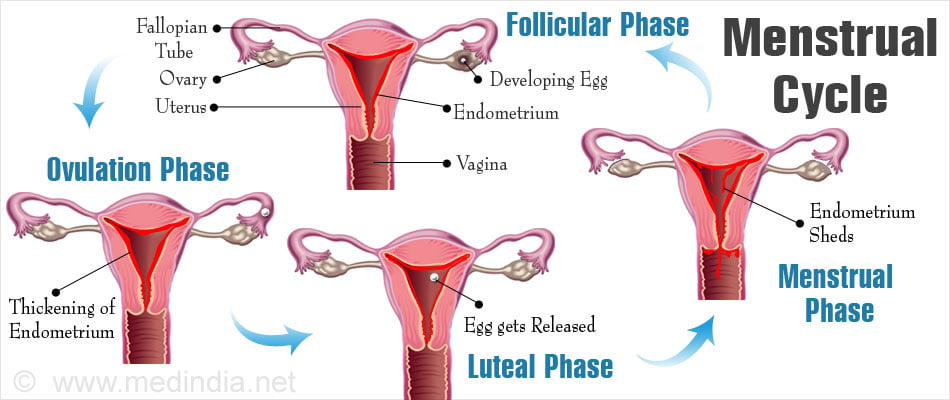
If everything is normal, a woman gets her monthly periods every 21-36 days or on an average, every 28 days. The bleeding usually lasts for about 4-5 days and 20-80 ml of blood is lost. Remember, more than 80 ml blood loss is considered abnormal.
What are the Phases of Menstrual Cycle?
Changes during a menstrual cycle are manifested both in the ovaries and uterus, and are called as ovarian cycle and uterine cycle, respectively. Both these cycles are divided into various phases that are dependent on fluctuations in the levels of the pituitary hormones follicular stimulating hormones (FSH) and luteinizing hormone (LH), and the female hormones, estrogen and progesterone.
How Does Your Menstrual Cycle Work?
The ovaries start to develop follicles even when a female fetus is in the mother’s womb. Each month, a group of follicles is recruited from a single ovary. The dominant follicle of the group matures and increases in size. This process is facilitated by the rise in FSH and LH hormones secreted by the pituitary gland, and the female hormone, estrogen. The dominant follicle ultimately develops into graffian follicle and contains secondary oocyte which later develops into the ovum. At the same time, the uterus is in the proliferative phase and endometrial or inner lining is proliferating to receive the embryo. Thus, it can be said that follicular phase of the ovary coincides with the proliferative phase in the uterus.
During the midpoint of the cycle, that is, around 14th day of an average 28 day cycle, due to a sudden rise in LH called as LH surge, the graffian follicle ruptures and releases the secondary oocyte. This is called ovulation and marks the beginning of the luteal phase or secretory phase of uterine cycle. The graffian follicle is now called corpus luteum and it secretes progesterone. Progesterone is called the hormone of pregnancy as it serves two functions. It nourishes, proliferates and thickens the endometrial layer, so that it becomes ready and cushiony enough to implant the fetus, and it supports the pregnancy.
The secondary oocyte, after getting released from the ovary is picked up by fallopian tube, where it descends towards the uterus. Meanwhile, if a woman has had sexual intercourse at or around the time of ovulation, the sperms ascend up from the uterine cervix through the uterus into the fallopian tubes to meet the secondary oocyte. The penetration of a single sperm into secondary oocyte converts it into an ovum. The fusion of sperm and ovum is called fertilization that leads to the formation of zygote.
The zygote rolls down from fallopian tube into the uterus, simultaneously developing into an embryo. The embryo gets embedded in the thickened endometrial layer, this is called implantation. It marks the beginning of pregnancy and you miss your periods.
But, if the secondary oocyte is not fertilized by a sperm, it descends into the uterus as it is. Due to the absence of implantation, the corpus luteum degenerates causing a sharp decline in the progesterone hormone levels. A sudden fall in progesterone causes the endometrial lining to shed off in the form of menstrual uterine bleeding through the vagina. This manifests as the monthly period bleeding and lasts for 4-5 days.
Predicting the time of ovulation can be crucial under certain situations. Ovulation occurs at the midpoint of every menstrual cycle i.e. around the 14th day of an average 28 day cycle. It is only during ovulation that the secondary oocyte is released from the ovary and is available for fertilization. Females having unprotected sexual intercourse around the time of ovulation have high chances of conceiving. Thus, if a woman is planning a baby, the time around ovulation is the best time for intercourse. However, if a woman does not want to become pregnant, she must refrain from sexual intercourse or be extra cautious around this time. Generally, the first seven days and last 7 days of the menstrual cycle are considered to be the safest times to avoid pregnancy.
There are various commercially available ovulation detection kits, which can be safely used at home to detect increased LH in urine around the midpoint of your cycle. The body temperature is also raised at that time. Some women experience sharp abdominal pain associated with a few drops of vaginal bleeding at the time of ovulation.
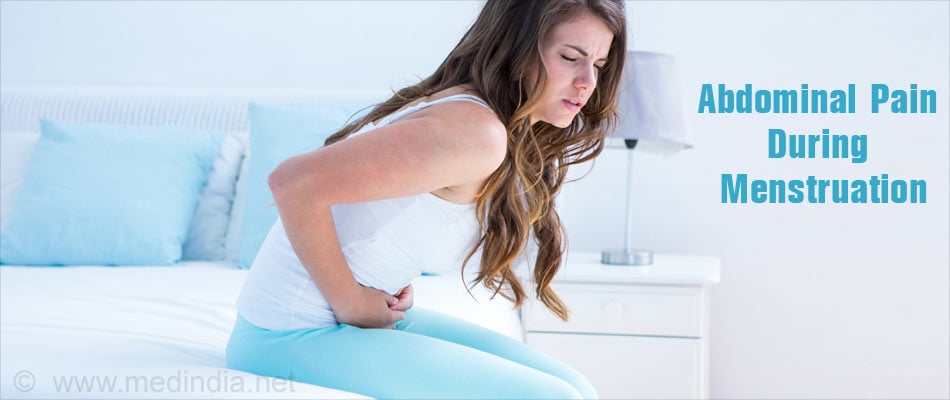
What Causes Menstrual Cycle Irregularities or Other Menstrual Problems?
Menstrual irregularities or problems manifest in various ways:
Monthly periods can be missed and if they are missed for three or more months at a stretch, the condition is known as amenorrhea. Amenorrhea is bound to occur during pregnancy and is normal. But if a woman misses periods and is not pregnant, she should immediately consult a doctor.
The menstrual bleeding may be excessive in the amount of more than 80 ml and / or may last for more than 7 days. This is called as menorrhagia.
The condition where the monthly periods occur in less than 21 days and remain constant at that frequency is called polymenorrhea.
If the periods occur more than 36 days apart, that is, menses are delayed and remain constant at that frequency, the condition is called as oligomenorrhea.
Painful menstruation is called dysmenorrhea. Some pain is expected during periods, but severe pain may require tests to rule out any pathology.
The causes behind menstrual irregularities are multifactorial. Modern sedentary lifestyle, high stress, hectic schedules, unhealthy diet, lack of exercise, smoking and alcohol consumption, emotional turmoil, anemia are some of the factors that can lead to irregularities of the menstrual cycle. Besides, fibroids and polyps in the uterus, endometriosis, sometimes intrauterine contraceptive devices, hypothyroidism, hyperthyroidism, blood cancers, tumors in ovaries or fallopian tubes are some of the pathological factors behind menstrual disturbances.
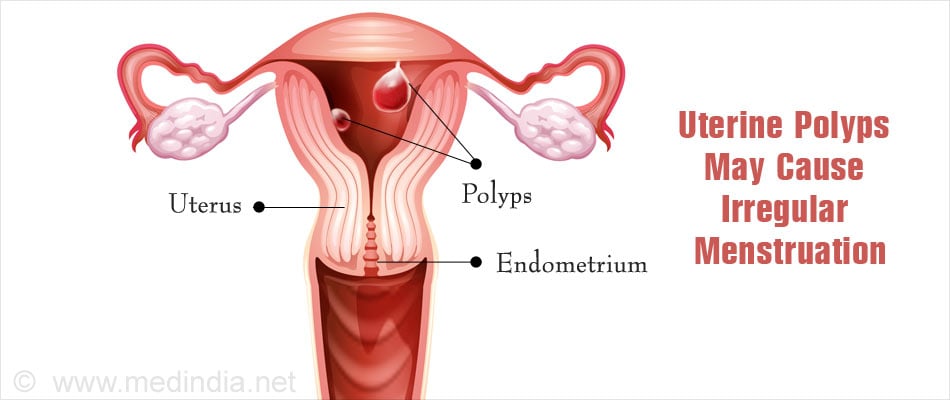
What Can I Do to Prevent Menstrual Cycle Irregularities?
First, try to find out the cause behind the irregular periods, which may not always be a pathology. Sometimes, adopting healthy lifestyle like following a simpler work schedule, de-stressing with yoga, regular walking, or quitting smoking and alcohol might work. If an intrauterine contraceptive device (IUCD) is the cause behind irregular periods, it should be removed and replaced by an alternative. One should eat a healthy balanced diet, specifically rich in iron. A combination of jaggery and peanuts is among the cheapest and the best source of iron.
Hormonal imbalances must be corrected. Sometimes, oral contraceptives are the reason behind irregular cycle. If so, their use must be immediately discontinued and some alternate source of contraception must be adopted.
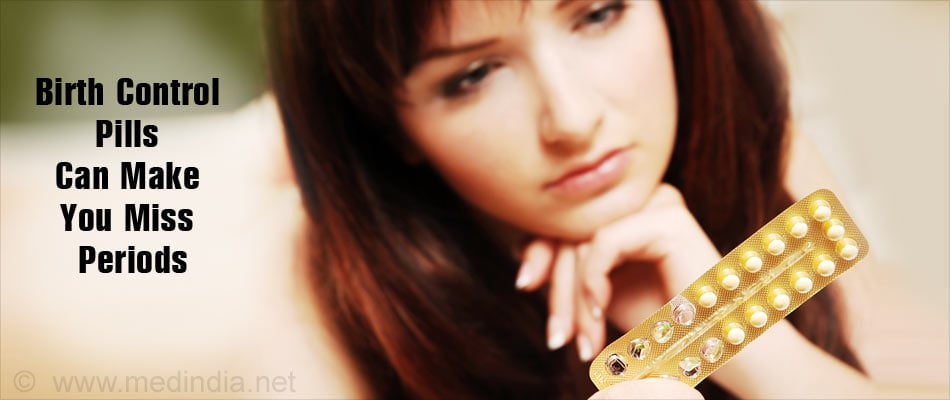
For any menstrual problem, a complete checkup by doctor is mandatory and a specific management plan is adopted if serious pathology is detected. Menstrual irregularities must never be taken for granted as it is the warning sign of impending infertility.
How to Track Menstrual Cycle?
Tracking the menstrual cycle must be in the habit of every woman in the reproductive age group. The longer you track your cycle, the more familiar you get with your body’s system and the earlier you can detect any change that occurs.
- Take a calendar. Mark the first day of your menses and then the last day of your menses. This will help you keep a monthly track of the duration of the menstrual cycle. Repeat the same thing next month and every month.
- The difference between two months must be calculated as the first day of bleeding of previous month’s periods to the first day of bleeding of next month’s periods. Normally, the length of a menstrual cycle is an average of 28 days and ranges from 21 days to 36 days. If a woman gets periods before 21 days or after 36 days of the previous cycle on a regular basis, something could be wrong.
- Tracking the menstrual cycle will also help keep track of ovulation for those planning a baby. Ovulation generally occurs around the 14th day in an average 28 day cycle.
What is Premenstrual Syndrome, Mittelschmerz, and Polycystic Ovarian Syndrome?
- Premenstrual Syndrome: It is also known as premenstrual tension. It comprises of physical, psychological and behavioral changes that occur in a woman just before she is about to get her periods. It usually occurs 7 days prior to periods and resolves by the end. Common symptoms are anxiety, depression, irritation, mood swings, headache, sleeplessness, difficulty in concentration, bloating, fluid retention and breast tenderness. Often known as PMS, about three out of every four women may experience it at some point in their lives.
- Mittelschmerz: During ovulation, some women feel a sharp abdominal pain, associated with slight vaginal bleeding, the rise in temperature and mood swings. This is called as Mittelschmerz. It is an important indicator of ovulation.
- Polycystic Ovarian Syndrome: Polycystic Ovarian Syndrome is associated with the development of multiple cysts in ovaries and is characterized by the absence of ovulation, thereby resulting in menstrual abnormalities. It is a common problem in adolescents developing soon after puberty. It is also responsible for infertility. It increases the level of testosterone in females, which manifest as acne and excessive hair growth on the face, chest and thighs.
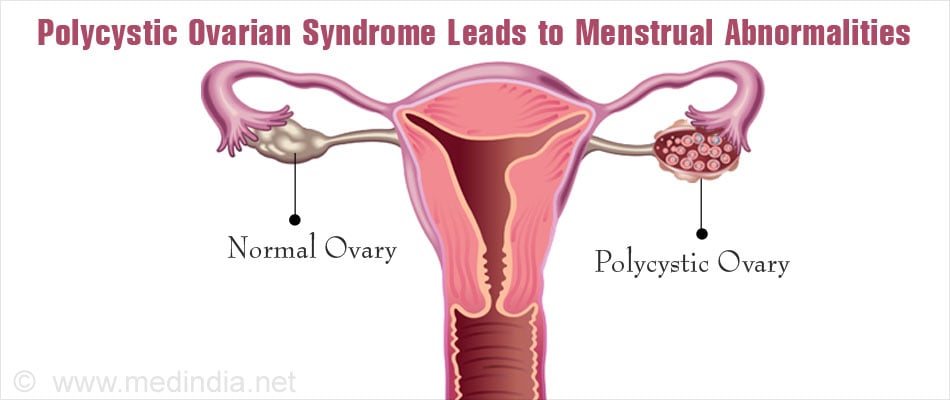
What are Menstrual Myths?
Menstrual Myths are age-old gossips and false beliefs related to monthly periods. Starting with the classical “menstrual blood is impure or unclean blood”. This is untrue. Menstrual blood is the same blood that will ooze out from a cut on your hand. Just because it comes from the private parts does not mean it is unclean or impure. Secondly, whoever told that “bathing during periods increases blood flow” certainly hates bathes. Rather, you must bathe daily during menstruation and maintain your hygiene. Similarly, touching pickles during periods will not spoil it unless you dip your fingers in fungus syrup and spin them in the jar. To top it all, the phobia of missed periods. There is no need to jump like a ninja in case you miss a month. Sure, amenorrhea is the first sign of pregnancy, but it can be caused by other reasons too, which could be something as simple as stress.
Health tips
- Bhujangasana and Surya Namaskar are two most efficient yoga's which are capable of preventing and treating menstrual cycle related ailments in women.
- Making dietary adjustments (e.g., upping protein and carbs and lowering sugar, salt, caffeine, and alcohol); exercising frequently; using stress reduction strategies; and getting enough sleep.

